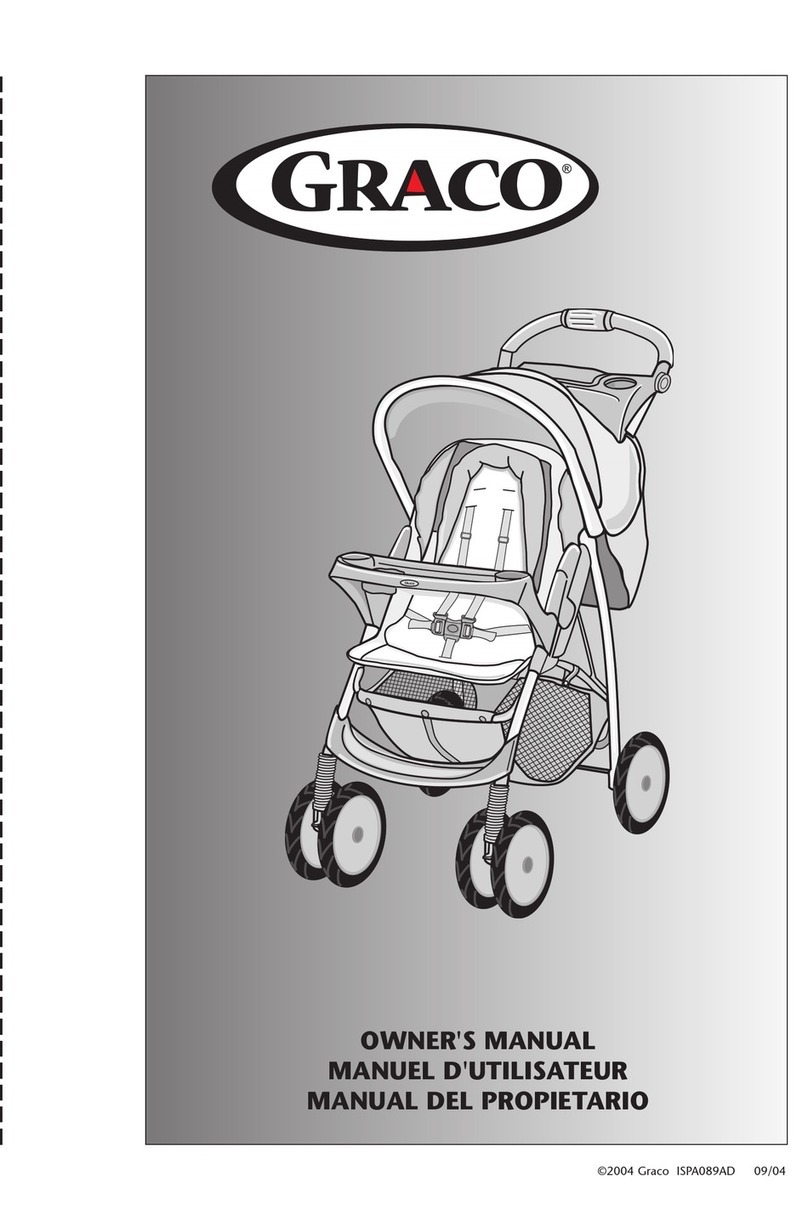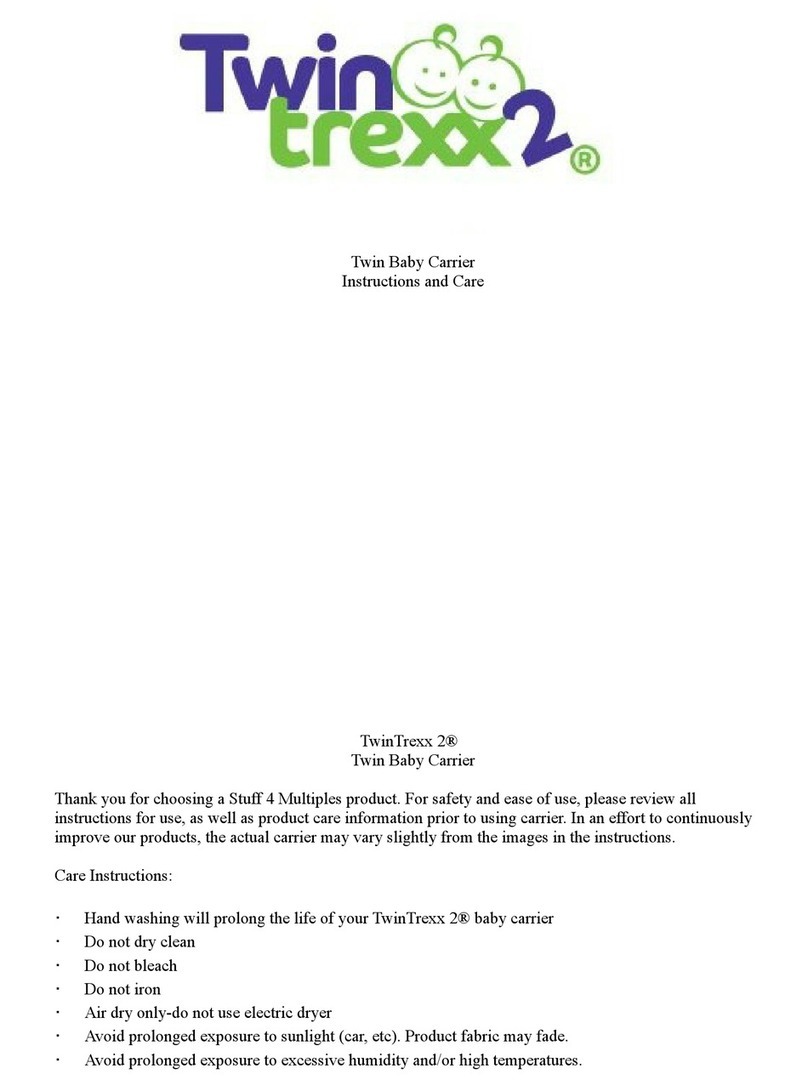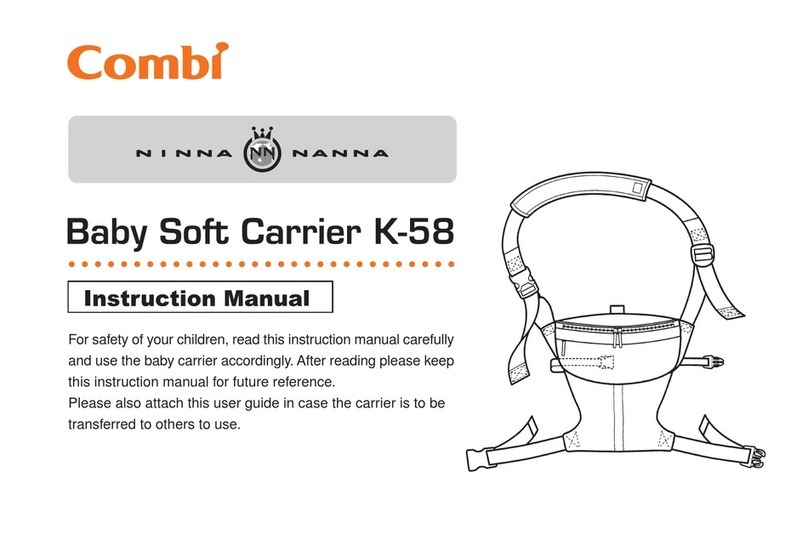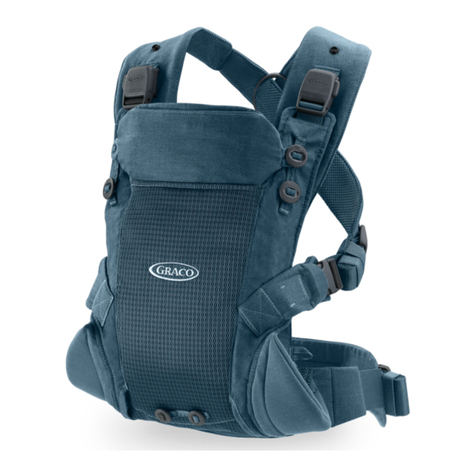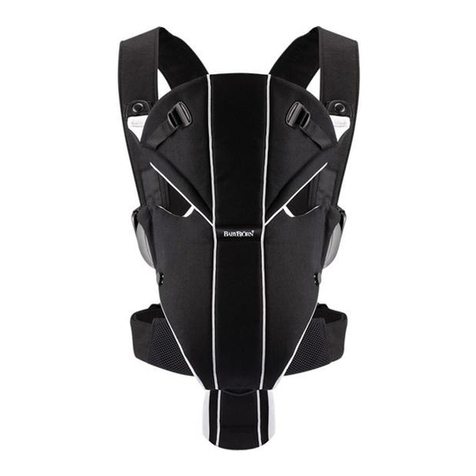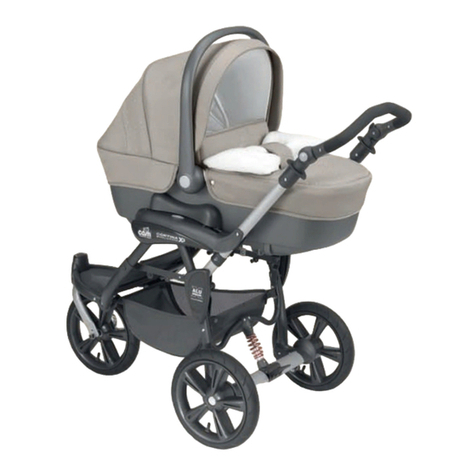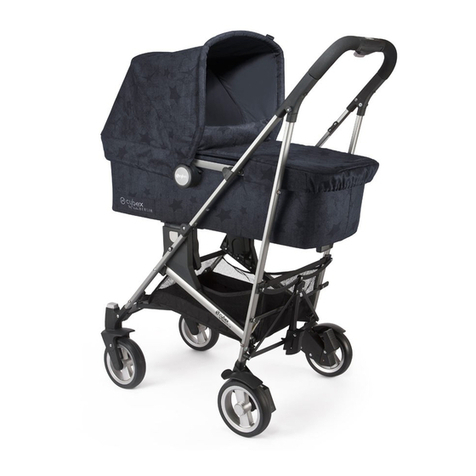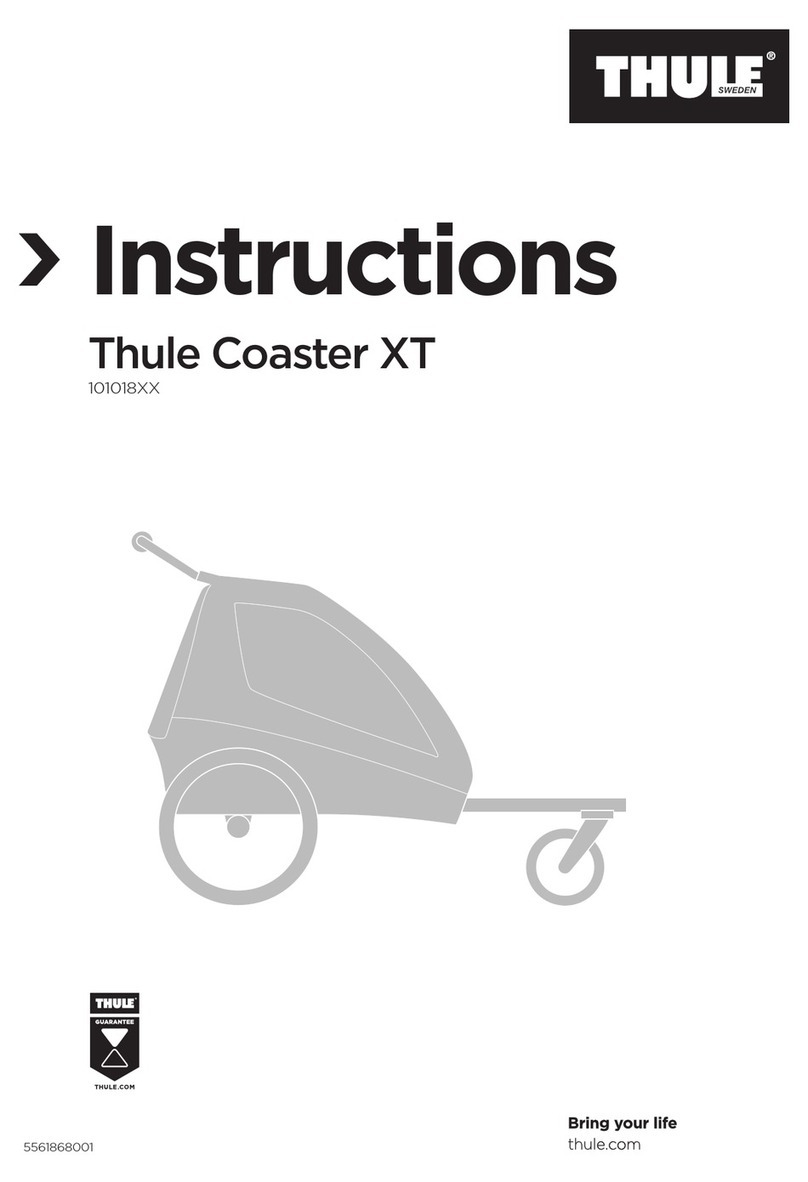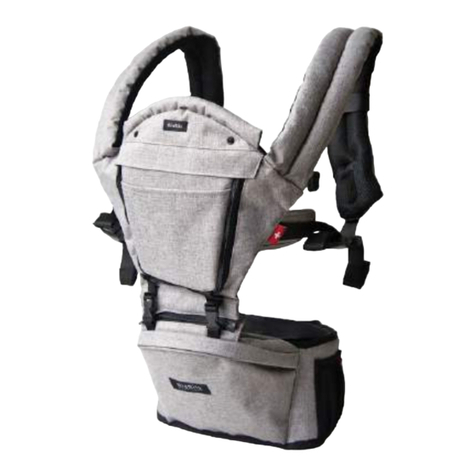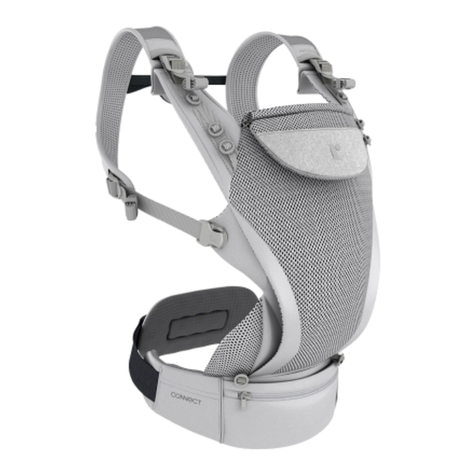Hipababy meh dai Installation and operation manual

Hipababy
Custom Baby Carriers
CONTENTS
Waist tying variation –apron vs non- apron.....................................................................................................2
Tying options ..............................................................................................................................................3
Newborn front carry........................................................................................................................................4
Front carry legs out..........................................................................................................................................6
For newborn...............................................................................................................................................6
For older baby.............................................................................................................................................7
Back carry - back carry is suitable from around 5 months.................................................................................9
Getting your baby on your back...................................................................................................................9
Back Tying Options......................................................................................................................................9
Back Carry With Crossed Straps ..................................................................................................................... 12
Non apron with tibetan tie............................................................................................................................. 15
Safety and Troubleshooting........................................................................................................................... 18
Washing.................................................................................................................................................... 18
Instructions for using your meh dai/mei tai

Instructions for using your mei tai
Hipababy Slings Copyright © Australia 2015 and 2016
An example of apron style - baby's bum is
below the waistband. You can't see any of the
waistband under baby's bum when the carrier
is worn
Non- apron style - baby's bum sits above the
waistband
WAIST TYING VARIATION –APRON VS NON- APRON
Please note: these instructions also cover the half buckle (just buckle the waist instead of
tying) and to wear the waist apron style simply remove the buckles and rethead them the
opposite way (otherwise they will by upside down).
I often wear my meh dai 'apron style'. This is where you tie the carrier around your waist
just like an apron. The print you want to show when the carrier is worn will be towards your
body. When sitting in the carrier the baby's bum will sit below the top of the waistband in a
pouch made by the carrier panel.
There is another method you can use to tie your carrier around your waist - the non-apron
style. Tying this way distributes baby's weight differently. More of your baby's weight will
be distributed towards your hips.
You can tie the waist band around your waist or at the top of your hip bones. To tie this way
hold the carrier with the print you want to show facing towards your body and reverse side
facing out. Then flip the waist band under once and tie around you waist. Put your baby in
the carrier with your preferred method and tie on as normal. The whole waist band will sit
below your baby's bum (see picture below) allowing it to direct more weight towards your
hips.
Tying non-apron also lengthens the body which allows you to get more use out the carrier
as your baby grows taller.

Instructions for using your mei tai
Hipababy Slings Copyright © Australia 2015 and 2016
Lexie Twist across bum.
Straps spread across baby’s bum.
Straps passed over then under baby’s legs and
tied in back.
TYING OPTIONS
Tying in different ways will distribute your baby’s weight slightly differently. Experiment
with what works for you. You can cross the straps over baby’s leg across their bum and
under the opposite leg. You can spread the straps for more support. You can also try a Lexie
Twist - twist the straps together (like the first part of a knot), then bring the straps under
your baby’s legs and around to the back.

Instructions for using your mei tai
Hipababy Slings Copyright © Australia 2015 and 2016
Tie the carrier around your waist like an apron
and hold your baby against you. Your baby will
naturally hold their legs in a ‘froggied’ position
Pull the body of the carrier over your baby.
NEWBORN FRONT CARRY
Do not swaddle your baby in the carrier.
Important: When froggied your child’s weight should be resting on their bum rather than
their feet. If your baby is pushing their feet against the carrier there is too much pressure on
their feet.
If the body of the carrier is too tall try tying the waist higher than your natural waist (this
will take up some height). You can also roll the waist and wear the waist either apron or
non-apron style. You may have to experiment a little to get the height right.
Pull the straps over your shoulders and pull
down on the straps to tighten
Wrap the straps around your baby’s bum and bring the straps
around to your back to tie. If your carrier has wrap straps you
can spread the straps out instead and wrap them over baby’s
bum before bringing them back behind your to tie.

Instructions for using your mei tai
Hipababy Slings Copyright © Australia 2015 and 2016
Roll up the sleeping hood if desired
If you find that your infants head is not
being held as close to you as you would
like, there are a few things you can try to
bring them a bit closer.
First, make sure that you have the straps
pulled nice and tight so that all the slack is
taken up. If you spread the straps wider
on your shoulders it will pull the top in a
bit closer to baby's head.
You may also take the straps where they
come out of the body and flip them (and
the corner of the body) towards the
outside (overlapping the print front) this
will make the top area of the mei tai more
narrow and bring it in closer to baby's
head.
Another option is to fold or roll up a
receiving blanket or cloth and place it inside
behind baby's head and the top the body
(making sure baby’s face is not covered).
This holds baby's head nice and secure and
takes up any extra space.
Legs in carry with newborn (straps twisted)

Instructions for using your mei tai
Hipababy Slings Copyright © Australia 2015 and 2016
FRONT CARRY LEGS OUT
FOR NEWBORN
Tie your carrier on like an apron. Cinch the base if your carrier has the adjustable base
option, if not shorten the width of the carrier by tying a ribbon around it instead, then
following the instructions below. If your carrier is too tall roll the waistband to shorten the
height of the meh dai.
Legs out using built in adjustable base

Instructions for using your mei tai
Hipababy Slings Copyright © Australia 2015 and 2016
Bounce your baby a little so they have a good
'seat' with knees higher than bum, then pull the
shoulder straps towards the floor.
Pull any slack out of the panel
Tie the carrier on as you would an apron with the
right side/main facing towards your body
right side facing towards your body.
Pull up the body of the carrier over your baby and
place the shoulder straps over your shoulders.
FOR OLDER BABY
Tie your carrier on like an apron as explained below or if you would like extra height in the
panel tie the opposite way so that the waistband will show below babies’ bum (non-apron
style) (see back carry section for instructions)

Instructions for using your mei tai
Hipababy Slings Copyright © Australia 2015 and 2016
Cross the shoulder straps over one leg then
opposite the other
Alternative tie off - Lexie Twist. Twist the
straps around each other (or use a half knot)
and bring the straps back to tie behind you.
For younger babies make sure the knot is on
baby's bum rather than their back (this allows
their spine to follow its natural curve)
Pull the straps behind you
Tie the straps

Instructions for using your mei tai
Hipababy Slings Copyright © Australia 2015 and 2016
Tibetan tie
Backpack/rucksack straps
BACK CARRY - BACK CARRY IS SUITABLE FROM AROUND 5
MONTHS (NOT E : BABY MU ST H AVE GOOD HEA D CONTROL )
GETTING YOUR BABY ON YOUR BACK
SOFA METHOD
Place your carrier on a chair or sofa with the straps spread out and place your baby on top.
Sit in front of your baby and tie the waist straps. Pick up the shoulder straps and draw your
baby onto your back as you pull the straps over your shoulders. Holding the straps in your
hands, stand up and pull the straps upwards while you give a little bounce to seat the baby
deeper into the carrier
HIP SCOOT
Tie the carrier on like an apron with the carrier hanging down behind you. Hold your baby at
your hip and scoot her around to your back. Holding the straps in your hands, stand up and
pull the straps upwards while you give a little bounce to seat your baby deeper into the
carrier.
BACK TYING OPTIONS
You have several options for tying the shoulder straps (and you can mix and match tying
options to find what you like the best –each will distribute your baby’s weight slightly
differently).
You can bring the shoulder straps straight back around backpack style or you can cross the
straps across your chest. I like to cross them high on my chest and/or twist them together
like the first part of a knot. After tying across your front how you prefer you bring the straps
back behind you and cross the straps over and under baby’s legs. Before tying give a little
bounce to pull up any slack, and bring around to the front to tie. When you have finished
check that the baby is in a good seated position deep in the carrier, with their knees higher
than their bum.
FRONT OPTIONS

Instructions for using your mei tai
Hipababy Slings Copyright © Australia 2015 and 2016
Straps over legs, then under opposite leg
Wrap straps spread
Straps crossed high
Straps twisted like the first half of a knot
(chest belt)
BACK OPTIONS
There are three main options for tying the straps across baby’s legs.

Instructions for using your mei tai
Hipababy Slings Copyright © Australia 2015 and 2016
Straps over baby’s legs and twisted under baby’s bum, then
brought under the legs to the front and tied in a square knot

Instructions for using your mei tai
Hipababy Slings Copyright © Australia 2015 and 2016
Pull the carrier over the baby.
Put the carrier on like an apron. Tie around your
natural waist. For a high back carry place the
waistband higher.
Put the baby on your hip.
BACK CARRY WITH CROSSED STRAPS
Scoot the baby around to your back.

Instructions for using your mei tai
Hipababy Slings Copyright © Australia 2015 and 2016
Pull the straps upwards and give a little bounce
to seat the baby deeper in the sling.
Pull the straps over your shoulders.
Cross the straps and bring them round to the
back over your baby’s legs.
Finish by tying a knot under baby’s bum or cross
the straps under your baby’s bum and bring
them to the front.

Instructions for using your mei tai
Hipababy Slings Copyright © Australia 2015 and 2016
All Done !
Back to the front and tie in a square knot

Instructions for using your mei tai
Hipababy Slings Copyright © Australia 2015 and 2016
Scoot your baby onto your back –keep one
hand on baby at all times.
Pull the body of the carrier over your baby.
Hold your baby on your hip
NON APRON WITH TIBETAN TIE
Tie the carrier on so the waistband is below
the body of the carrier.

Instructions for using your mei tai
Hipababy Slings Copyright © Australia 2015 and 2016
Pull the straps straight up and give a little
bounce
Bring the straps over your shoulders like a back
pack
Cross each strap over and under baby’s legs and
bring it back around to the front. Tie off at the front
in a square know now or continue on to tie a Tibetan
variation.

Instructions for using your mei tai
Hipababy Slings Copyright © Australia 2015 and 2016
Hold one strap between your knees and bring the other through the shoulder
strap. Then hold this strap between your knees to secure it while your do the
same with the other side. Tie the straps in a square knot at your chest.

Instructions for using your mei tai
Hipababy Slings Copyright © Australia 2015 and 2016
SAFETY AND TROUBLESHOOTING
Inspect before each use and don’t use if there
are signs of wear. Don’t leave young babies
wrapped in a sling to sleep as they could
become entangled in the fabric. Use common
sense when using your baby carrier, and avoid
any activities that will shake or put your baby in
danger, e.g. jogging, bike riding, carrying hot
drinks, cooking. Always check your baby’s
airways are clear.
Tie the straps in a square knot (not a bow).
Before use read all instructions. Practice with a
doll or teddy before trying with baby over a soft
surface or with a helper.
For your comfort ensure baby’s weight is not hanging away from you because the carrier is
too loose (make sure there is no gap between your body and baby’s body) Baby should be
seated with knees higher than their bottom. Do not overdress baby.
WASHING
Spot clean as necessary. Wash in cold water on a delicate cycle in a laundry bag with any
buckles clipped together and line dry.
WARNING
FALL AND SUFFOCATION HAZARD
FALL HAZARD - Infants can fall through a wide leg opening
or out of carrier.
Adjust leg openings to fit baby’s legs snugly.
Before each use, make sure all straps are secure.
Take special care when leaning or walking.
Never bend at waist; bend at knees.
SUFFOCATION HAZARD –Infants under 4 months can suffocate in this
product if face is pressed tight against your body.
Do not strap infant too tight against your body.
Allow room for head movement.
Keep infant’s face free from obstructions at all times.
This manual suits for next models
2
Table of contents
Other Hipababy Baby Carrier manuals




